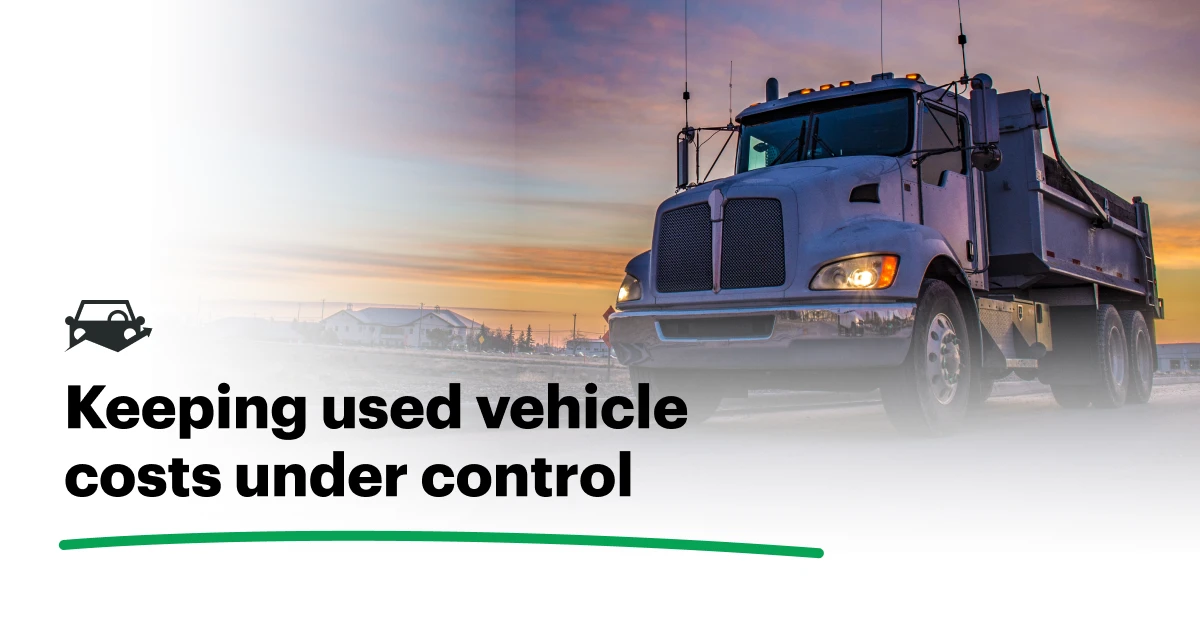Fleets that take preventive maintenance seriously don’t just save on operating costs by minimizing costly repairs. By keeping their vehicles in peak condition, they also maximize the fuel economy of their gas-powered assets.
.webp)
When fleet professionals talk about maximizing fuel economy there tends to be a focus on curbing wasteful driver behavior (for good reason). It’s completely true that how drivers operate their vehicles has a significant impact on the rate they’ll consume fuel. In the US alone, idling is believed to waste more than $20 billion in fuel every year. Aggressive driving actions like excessive acceleration and harsh braking have been found to reduce fuel economy by 15-30% at highway speeds and 10-40% in stop-and-go traffic. When you add drivers using company vehicles for personal trips to the mix, it becomes abundantly clear that driving behavior is a leading cause of fuel waste.
But how drivers behave behind the wheel is far from the only factor that influences fuel economy. As vital components degrade, fuel economy suffers in turn.
Here are 4 common culprits of reduced gas mileage that fleets can avoid through preventive maintenance:
In late 2000, Congress passed the Transportation Recall Enhancement, Accountability and Documentation (TREAD) Act. Among reforms to vehicle safety recalls, the legislation also required car manufacturers to include tire pressure monitoring systems (TPMSs) in their products moving forward. Ever since, fleets have heavily relied on these built-in TPMSs to alert them when their vehicles’ tires require intervention.
But as helpful as these TPMSs are, most will only notify drivers of tire under-inflation once a significant amount of pressure has been lost. This can be problematic as, according to the Department of Energy, fuel economy falls by 0.2% for every 1 psi drop in average pressure (across all of a vehicles’ tires). This loss in efficiency is due to under-inflated tires having greater rolling resistance with the road beneath them.
To ensure your fleet vehicles’ tires are always properly inflated, consider making pressure checks a standard part of your organization’s vehicle inspections. They’re quick to perform and topping off a full set of under-inflated tires only takes a few minutes. By spending just a bit of additional time during your routine maintenance procedures, you can save your fleet countless dollars over the long run.
Brake systems harness the power of friction to slow vehicles on command. But as they accumulate moisture and debris, they often create friction whether your foot is on the brake pedal or not. This constant friction forces engines to work harder to get moving and stay in motion. And when engines exert themselves more than usual, they consume fuel at faster rates.
Regularly inspecting your vehicles’ brake systems not only keeps your vehicles running efficiently, but also ensures that the most vital safety mechanisms your vehicles possess are functioning properly. When examining your vehicles’ brakes, test to verify that calipers are squeezing and releasing brake pads as intended, brake fluids are free of contaminants, and that rotors and pads aren’t exhibiting signs of excessive wear.
Fuel and oxygen are the lifeblood of any internal-combustion engine, and for any vehicle to operate at its best, those essential elements need to be as contaminant-free as possible. Air filters act as a vehicle’s lungs by providing clean air while trapping harmful particulates that can hamper engine performance. Fuel filters serve a similar function by preventing various impurities from making their way into a vehicle’s fuel injection system.
But when these filters degrade or become clogged, they actually start to hinder the vehicles they aim to help. Instead of providing a constant flow of clean air, clogged air filters prevent air from reaching a vehicle’s engine. Oxygen-deprived engines exert needless energy to run, which means they burn through fuel at a faster rate. And as for clogged fuel filters, they have a tendency to reduce fuel pressure and damage fuel injectors, resulting in poor engine performance.
For these reasons, fleets should periodically replace their vehicles’ filters in accordance with their manufacturers’ recommendations. In general, it’s recommended that you replace a vehicle’s air and fuel filters every 15,000 to 30,000 miles. While replacing filters does come at a cost, any expenses accrued pale in comparison to the price of replacing an engine (which skimping on filters often necessitates).
As motor oil ages, additives in it begin to deteriorate. This degradation process causes the oil to thicken and form sludge that, instead of lubricating engine components, obstructs their movement. Greater resistance creates heightened levels of friction, forcing engines to work harder and consume fuel faster. In particularly severe cases, sludge from expired oil can even result in irreparable wear and tear to engine components.
To prevent sludge buildups and keep engines optimally lubricated, oil changes should be performed every 5,000 to 7,500 miles. Vehicles that only receive light use should still have their oil replaced every year (at least) as oil additives still deteriorate with minimal use.
As illustrated by these examples, preventive maintenance is a powerful way for fleets to rein in their fuel expenses by ensuring their vehicles are operating at peak efficiency. To measure how your PM efforts translate to actual savings, fleets can use fuel management software to analyze and optimize your fuel consumption and spend.
Compared to paper- and spreadsheet-based fuel tracking approaches, having a proper fuel monitoring system makes capturing fuel transaction data infinitely more streamlined. With a fuel management software-provided fuel log, fleet managers never have to worry about fussy formulas, different save versions, illegible handwriting and other headaches endemic to analogue fuel tracking.
And when it comes to providing insights, fuel reports provide an endless number of ways to slice and dice fuel data. Reports can visualize data through a wide variety of charts and graphs and can be easily shared within an organization to keep all stakeholders in the loop.

For six weeks starting in mid-September, members of the United Auto Workers (UAW) labor union went on strike against Detroit's Big Three automakers: Ford, General Motors and Stellantis. General wage increases, cost-of-living adjustments and greater worker protections were at the top of the UAW's list of demands.
.webp)
Implementing a driver scoring plan can help fleets better understand how driver behavior impacts the operation — for better or worse — while also incentivizing driver engagement. Fair and easy-to-follow driver scoring programs not only help catch issues, but they provide drivers with a clear goals-and-rewards system, fostering improved performance.

For organizations looking to expand their fleet in an economical way, used vehicles are a great option. But to ensure procurement savings don’t eventually spin into maintenance budget overruns, fleets should keep an especially close eye on their pre-owned assets.